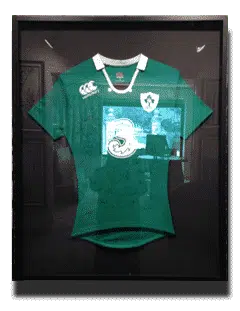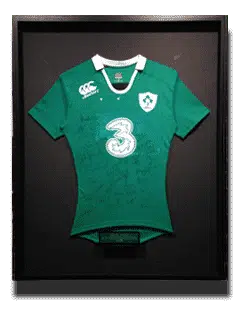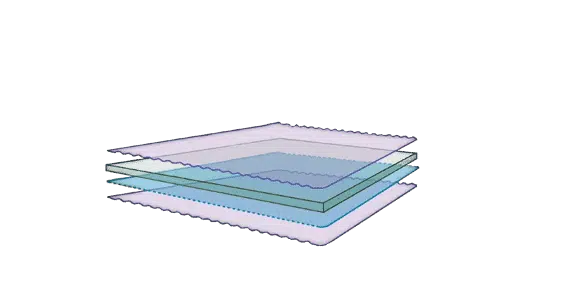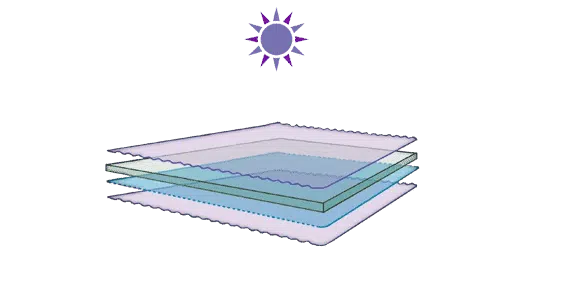Picture Framing Glass
Whether you want to protect your treasured artwork behind glass is one of the most important decisions you will have to make after selecting a frame.
No matter what kind of art you have there are certain advantages to displaying it behind glass. They include keeping fingers off the surface of a picture. Even the briefest touch can leave harmful residue on an image.
Modern glass can protect an artwork from the ravages of ultra-violet rays. This invisible part of the spectrum of sunlight, causes works on paper or works made up of other organic material to deteriorate over time.
One of the greatest modern inventions in framing has been the creation of glass with minimal glare. This means that when you use glass to protect a work of art it will have only minimal effect on the appearance. It will simply disappear when seen from most angles in your home.
Glare Reduction Glass:
Levels of Glass with UV Protection:
The standard to be Conservation Grade is 97%!
* ISO 1890:2007 recommends using glazing with at least 97%.
* International Organization for Standardization (ISO) – a non-profit, third-party organization that sets worldwide standards for everything from healthcare and baby food, to the preservation of scrapbooks and motion pictures.
How UV Protection Glass Works:
Tru Vue's Optium Museum Acrylic®
Overview
Tru Vue's Optium Museum Acrylic® is a premier choice for glazing applications worldwide, especially in settings that demand the utmost care and precision. This acrylic sheet is specifically designed to cater to the needs of delicate and valuable pieces, ensuring they remain in pristine condition. Here's a detailed breakdown of its features:
- 99% UV Protection: It provides top-tier UV protection, safeguarding fragile artworks and other valuable items from the detrimental effects of UV rays.
- Anti-Reflective: The acrylic is engineered to minimize reflections, ensuring that viewers experience optimal clarity when observing the artwork or item behind it.
- Abrasion Resistant: Equipped with a hard coat, this acrylic is resistant to minor scratches. This makes it especially suitable for areas with high foot traffic or during transit where the risk of abrasions is higher.
- Anti-Static: This feature is particularly beneficial for artworks made from charcoal and pastel. Additionally, the anti-static property reduces the accumulation of dust on the acrylic's surface, keeping the view clear and the artwork clean.
- High Light Transmission: With a light transmission rate of over 98%, this acrylic ensures excellent clarity, making the artwork or item behind it pop.
- Lightweight: Weighing half as much as traditional glass, Optium Museum Acrylic® is an ideal choice for larger installations where weight can be a concern.
- Ease of Maintenance: This acrylic variant is easier to clean compared to standard UVF acrylic, ensuring longevity and clarity.
- Versatility: Available in a range of gauges and sheet sizes, it caters to diverse needs.
- Shatter Resistance: Its excellent shatter resistance ensures safety, especially in settings where breakage can be a concern.
For anyone looking to protect and showcase their valuable artwork with unmatched clarity and safety, Tru Vue's Optium Museum Acrylic® is the go-to choice.
FAQ about Glass and Glazing:
When should I use acrylic?
It is recommended to using acrylic for hanging and shipping heavy oversized artwork, in children’s rooms, in earthquake zones, in high traffic areas or anywhere where safety is a concern.
Does acrylic have out-gassing?
No framing grades of acrylic have out-gassing. However, to be certain, we recommend only buying acrylic made in North America. All our acrylic products are out-gassing free.
When should I use a thicker acrylic product?
You should use 3mm acrylic when the frame’s size exceeds 36”x48”. Optium Museum Acrylic for oversized framing projects over 40”x60”.
How much space should I allow for expansion and contraction?
The standard 1/16” is recommended for every 12".
What type of glazing should I use for pastel or charcoal based art?
Pastel or charcoal based art can become damaged using most glazing products due to the inherent static charge of the substrate. Tru Vue Optium® Acrylic Glazing provides long-lasting anti-static as well as anti-reflective properties to help protect art from damage and to help showcase your art the way it was intended.
How does anti-reflective glass reduce reflection?
The thin film coatings on Tru Vue anti-reflective glass disrupt the energy contained in light waves causing them to flow out of sync. This disrupted wave pattern virtually eliminates all reflection from the glass surface. Diagrams of how this process works are included with the descriptions of all anti-reflective products.
What is non-glare glass?
Non-glare picture framing glass is finished to diffuse reflected light. This process also gives the glass surface a matte finish.
How do I clean Tru Vue glass products?
All of Tru Vue glass products are clean and ready to use out of the box. If spot cleaning is needed, spray a small amount of ammonia-free glass cleaner on a micro-fiber cloth or a clean lint-free cotton rag. To prevent overspray, do not spray the cleaner directly on the glass. Press the cloth against the glass and clean in a round, circular motions.
Why does Tru Vue recommend using an ammonia-free glass cleaner?
Cleaning glass products with harsh chemicals such as ammonia can be harmful to your customers’ valued pieces. Ammonia can cause out-gassing within the framing package.
How can I remove the inkjet printing from the lite of glass?
The inkjet printing is printed at the very edge of the lite of glass and is small enough to be hidden by the rabbet of the frame. If you choose to remove the inkjet printing, apply a small amount of acetone (fingernail polish remover) to a cotton swap to wipe the lite clean.










